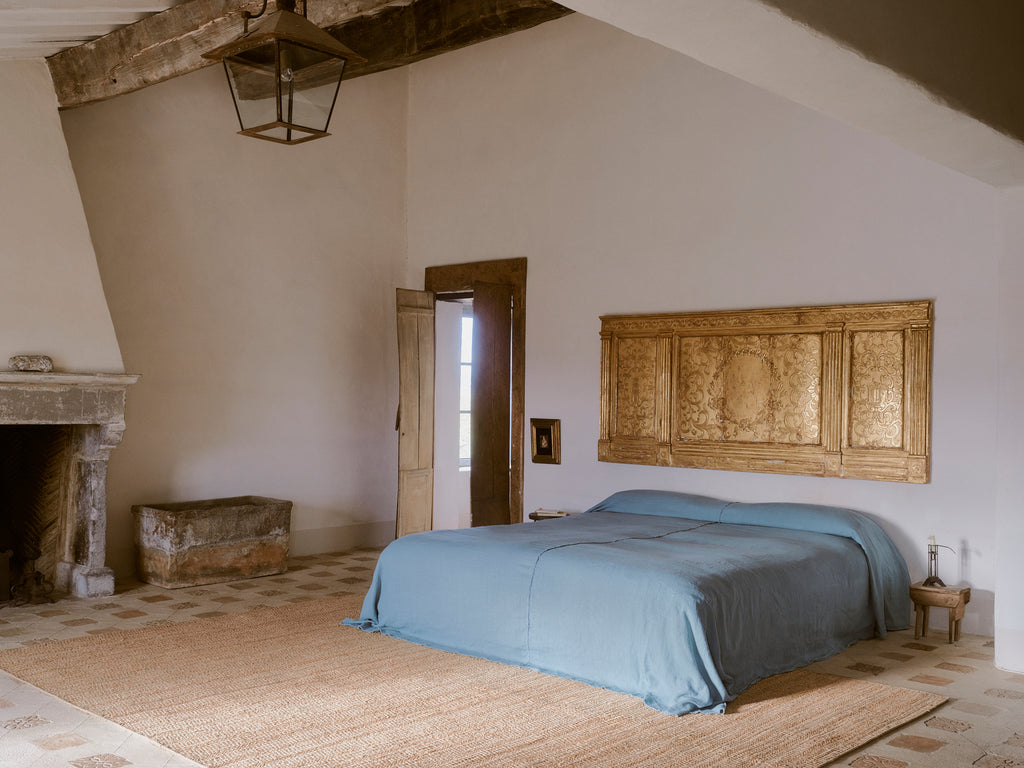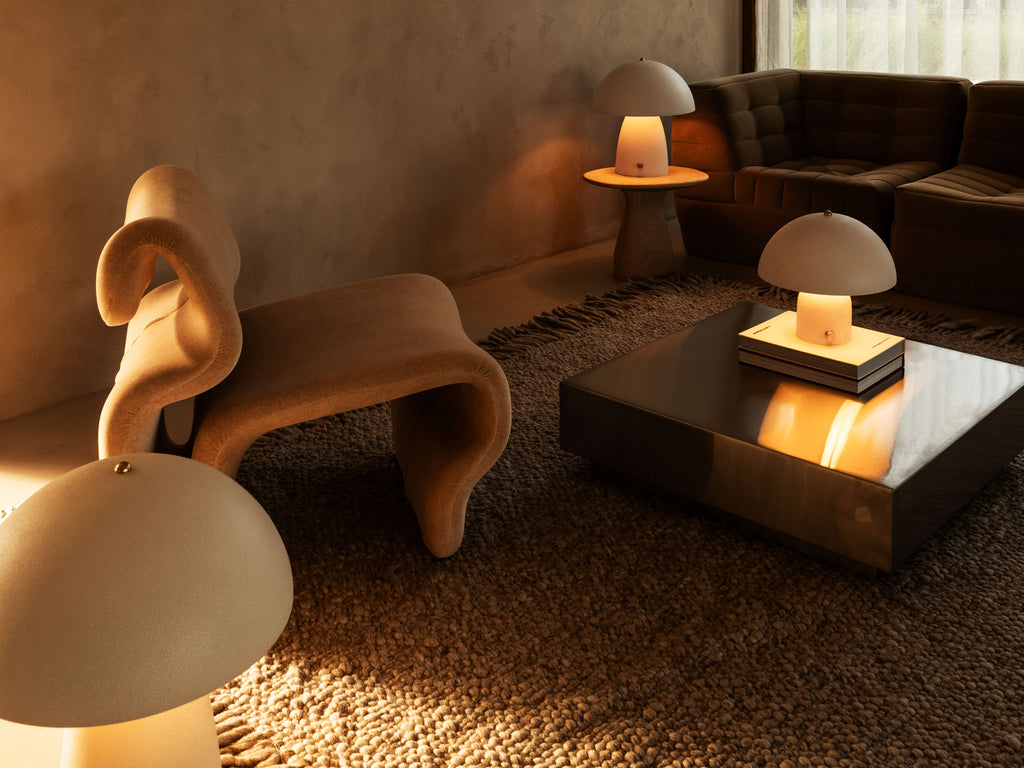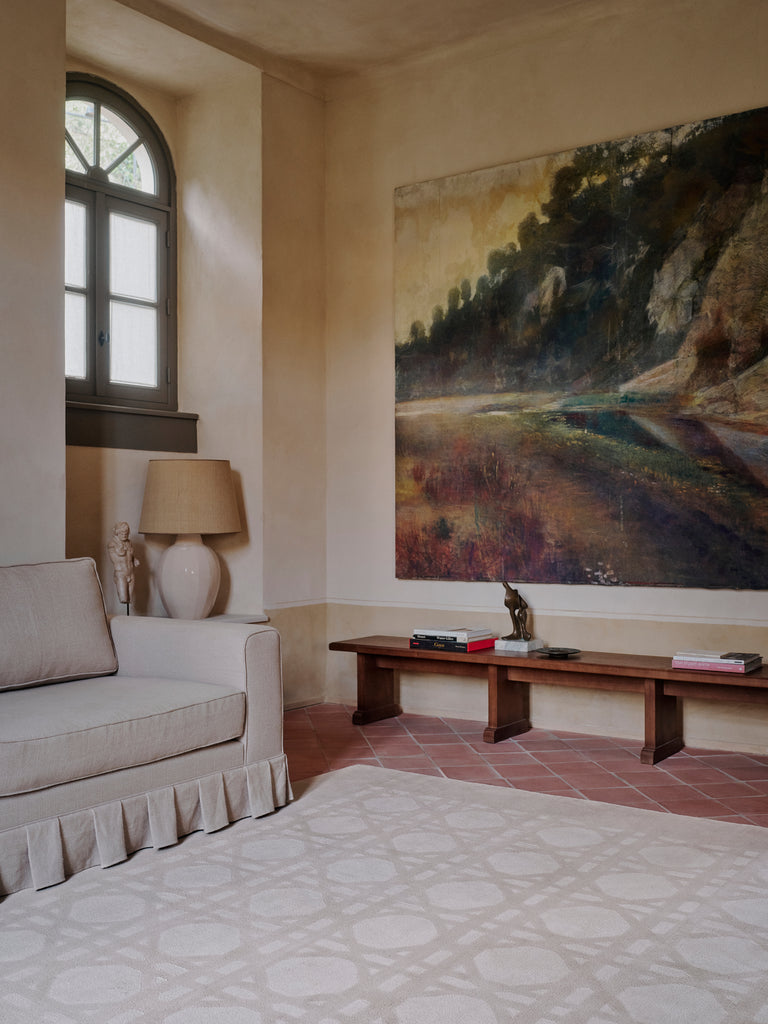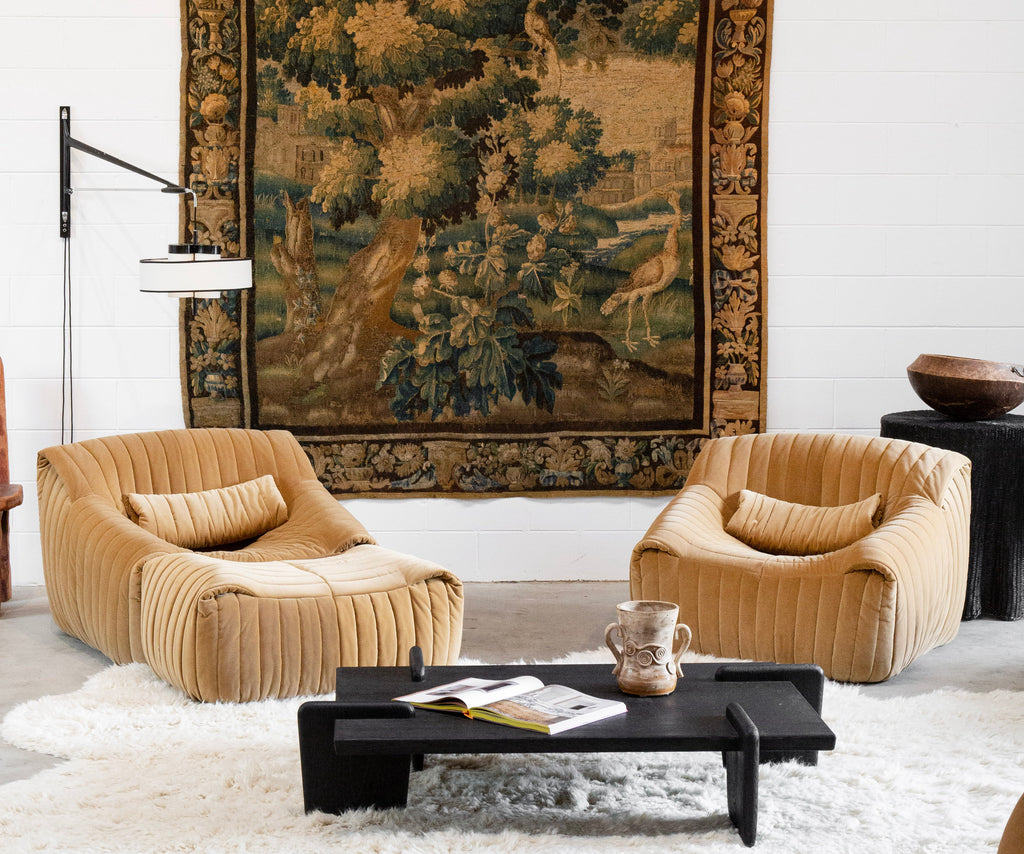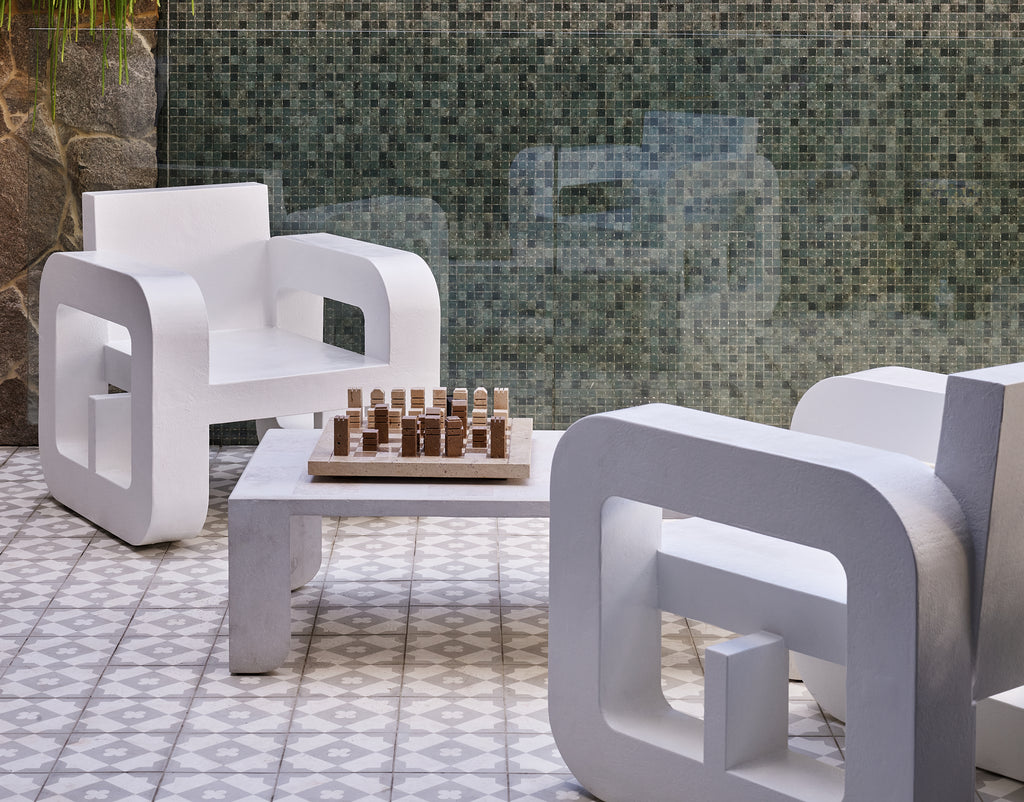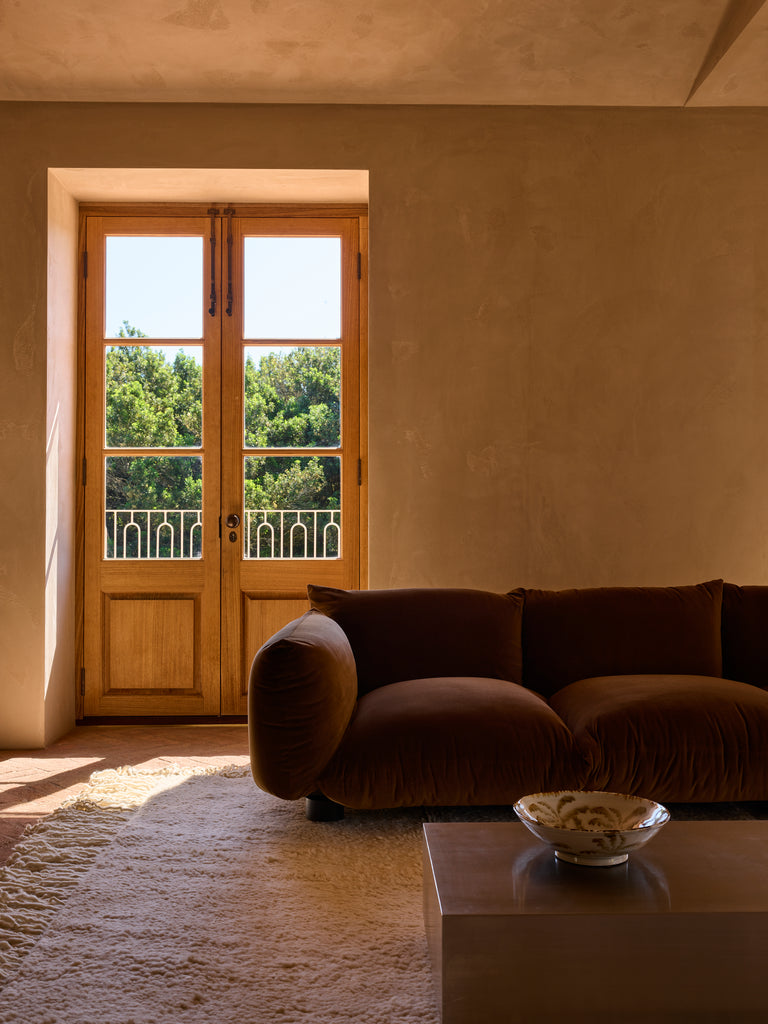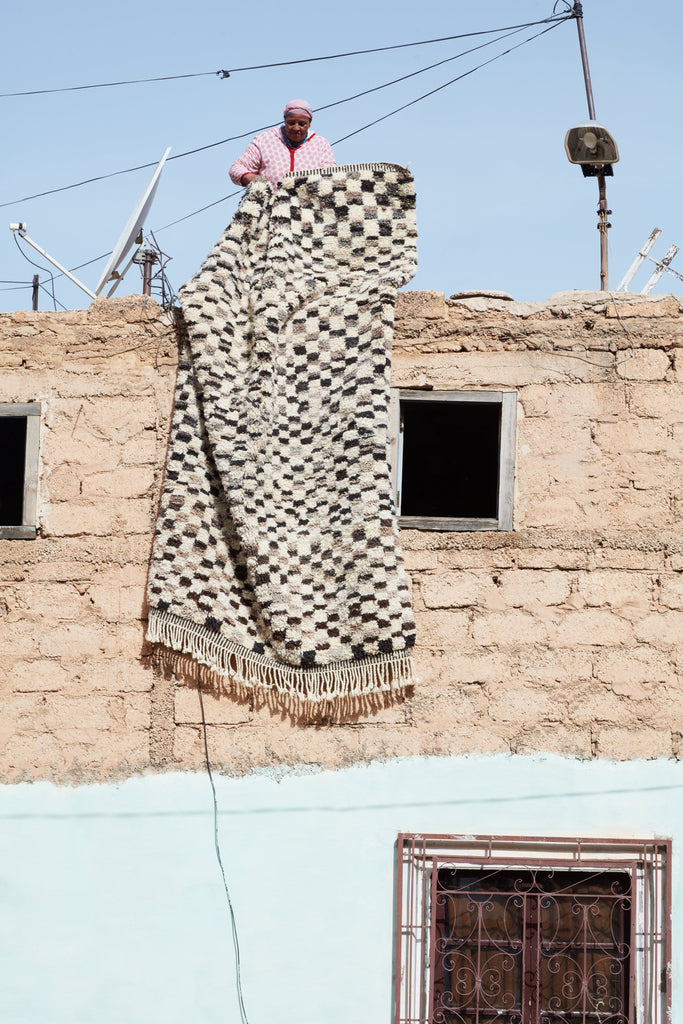Tête-à-tête
with Sam Gibb from Cloud Hidden
A little while back we had the pleasure of joining Sam Gibb from Cloud Hidden for tea at our Byron Bay Studio. Through an hour long silent ceremony we began our weekend with a little mindfulness and intention. It's rare to meet a person like Sam, who selflessly shares his wisdom for tea and musings for mindfulness. To say we left 'enlightened' is an understatement. Be it our meditative state (or something in the tea) we had a lot more to ruminate, so asked if he could chat to us for the journal.

Sam please tell us a little about your journey in to tea.
One of the things that has always touched me about tea is its universality, the way it reaches into all aspects of what it means to be human. We all have an experience of tea, we all have met her before. This gives people an openness to the The Way of Tea, we seem willing and interested in the experience. Society is not an easy place to live, to really live. It seems we are encouraged to numb ourselves to experience. At every turn there is an escape, a way to avoid things we do not accept or over-indulge in things we find pleasurable. We are encouraged all the time to bury our heads in the sand so we do not have to face our lives.
In my early 20s after intense meditation study I started to focus my life on understanding the psychological and emotional patterns that were causing suffering in the world, and how to help others explore this in themselves. I wrote my thesis on mindful interventions for youth suffering from PTSD and then I headed off to West Africa to work in post conflict environments with the United Nations, with all the righteous vigour of a youth with the belief they can change the world. I was somewhat overwhelmed by the level of suffering I was confronted with as well as my inability to heal it in the way that I thought I could. After about a year of living in the jungle I decided to head back into the world, through the calling of the thing that brings most of us back… Love. I had met a girl and we moved to the Northern Territory together. But not before a short stopover in Vancouver which was where I got my first real taste and experience of tea. We happen to wander into a small Chinese tea store, where the walls were lined with teapots. I was instantly drawn to it and the experience never left my mind even on going back to Australia. I was working as a teacher in the school trying to implement mindfulness programs into my day today classroom environment without any real success.
I headed off to West Africa to work in post conflict environments with the United Nations, with all the righteous vigour of a youth with the belief they can change the world.
It’s at this point of the story where I really found tea. Unable to get that small Tea shop out of my head I started looking for a place to learn and study. This led me to Taiwan to a small zen centre that focused on teaching meditation through tea ceremony. My motivations for going there was simply to learn more about tea, however, I found it one of the most transformational experiences. I began to integrate it into my day-to-day life, and found that it added richness and texture to everything.
Back at school my first experience of sharing this with my students came at a year eight camp. It was something I stumbled upon really. I had set a resolve to practice daily, and so had brought a few bowls and a thermos along for the ride. Every morning at 5am I would wander down to the lake to drink Tea and sit in contemplation. I was surprised to find that the very first morning two students were waiting for me - two students that I had taught for the year and had always resisted meditation. And by resisted, I mean refused! They were in a scattered group of students within every class that would just stare at you as you guided the class through the meditation with defiant teenaged eyes that said, "Try and make me". I had mentioned I would be having tea and they decided to join me. So before the sun had risen over the lake we sat and drank Tea, watching the crocodiles silently moving through the water.
Later that day, another two students asked to drink some Tea. Shocked again, we headed down to the lake and sat in the shade of a tree, hiding from the oppressive Outback sun. We drank in silence for forty minutes, which was the longest time I'd spent in silence with a student. Afterwards, we did not talk much, but I overheard one say to the other: "The patterns in the tree's leaves are amazing! I've never noticed them before!" To which her friend replied, "I know, and did you see the way the sunlight was shining through the trees, it was awesome!" I just smiled.
The next morning, I was up at 5am again and surprised to see that our numbers had grown: some five students awaited me this time! I was delighted by the motley crew that awaited me. After drinking with the sunrise for a second morning, some sat with me as I meditated and others headed back up to camp. Later that evening, while most students were playing games, a small group asked to have Tea and we sat under the stars while the chaos raged around us, bowls in hand.
Over the next few days, I shared Tea a number of times: some in silence, some over deeper conversation, but I always left with the feeling that the students had experienced something they had not been exposed to, something out of the ordinary for them. I set up regular drinking times at 5.30am, lunchtime and another in the evening. Every time I had a full table of ten students, sitting in silence waiting to be served which continued for the rest of the trip! Every ceremony was done in silence and every time at capacity.
Within 9 months of first going to Taiwan I had served countless bowls of tea to my students and others in my life. For me, so much of my life up to that point had been searching for a way to bridge the external and internal worlds, the psychological and the physical. I jumped from donor management with Unicef to monasteries, from ashram to refugee camps, trying to find a balance, bring the two worlds together. I believe this was my intention when I became a teacher, to bring the self-reflective into my students' lives. With tea, for the first time in my life, I felt I had found a way to do this. Without dogma, without words or concepts, a simple way to share the meditative mind with those around me. So I moved to Taiwan to focus my energy and life of serving tea to others. Mother Teresa said, "In this life we cannot do great things. We can only do small things with great love." Maybe this is closer to the truth of it, that while I serve Tea I do one small act with great love. And it is amazing the impact those small acts can have...
What was the greatest lesson you learned from your time at the monastery?
“We learn to serve tea, not make tea.” I couldn’t count the number of times I heard that phrase out of my teachers mouth. Living a life of tea, like all paths, is one of service. Serve of something we see as better or greater than ourselves. Something to put ourselves below, something to humble ourselves at the feet of. For me this has always been the growth of others, their awakening to who they are and their place in the world.
My teacher often says we have to draw a line around our tea practice and entering this space as the person we wanted to be. My time in Taiwan was the beginning of the process of widening this beyond the tea table, into more and more of life. At times I shrunk away from this expansion and other times I embraced it. You start to see the difference between the individual tea sessions and living life as a continual tea session. It is easy to get attached to the individual ceremonies, especially when the tea is hidden on the top shelf but ultimately these individual tea sessions, like everything else are experiences that arise and pass.
I remember once my teacher carefully lifted a cake of tea down from the shelf. I knew it was something special as it was hidden away beyond the view of curious eyes, like all fine tea and teaware should be. Opening the cake’s box my suspicions about the quality are confirmed. The subtlety of the smell alone transports me somewhere deep inside. With the mischievous smile of a zen teacher he looks up and informs me that the guests will need a meal after they finish tea. My heart sinks… I understand what he is saying. While everyone sits around the charcoal enjoying a tea of a calibre you could spend your life searching for and never find, I would be in the room next door stirring a soup pot.
As I walked into the kitchen my heart was heavy. I heard the music beginning as I chopped the carrots. I imagined what it would be like to be sitting at the table, fetching water, listening to the sound of the kettle… The slow boil of the stock on the stove reminded me of the kettle and I entered back into what I was doing. I saw the guests leaving the tea table after a deep tea session and sitting at the table to a beautiful meal that in a way, continued their journey into themselves. In that instant I saw I was at the tea table, I was part of the tea session. My mind went still and I could taste and feel the tea moving throughout my body. My movements changed, as though I was brewing tea with my knife. In this moment I embraced the widening of a life of tea in a way the to me embodied what the tea teachers and offers to the world. In a way we can learn to see that tea and life are not separate. This is where true growth begins.
Brewing tea is very ritualistic, what is your favourite part of the process?
There are two ways I could answer this question… The first would be to say that the process of serving tea is not one that can be broken into parts. That when we learn to live a life of serving tea, ceremonies never really end or begin, merely flow into one another. We start to see that the way that we eat, the way that we talk to people, and the mind we have, will all influence our tea brewing. Because of this approach we don’t see Teas as a process made up of parts, But as a way of life.
The other way to answer this question would be through a story. Last year my grandma was dying in a hospice. I moved back to Auckland to spend as much time with her as I could, and every day for three months I visited her and spent time by her bedside. I started talking to a nurse one-day and offered tea ceremony there. When I went to set up for tea there was one lady already in the corner of the room, tucked away in a chair. I wasn’t sure how long she had been there but she obviously couldn’t speak and struggled to move. She watched as I set up and as the tea ceremony began she seemed equally engaged. There is moment when the first Tea bowl is handed out will you look into the eyes of the person receiving it. This was always part of the tea ceremony that challenge to me as it seems more comfortable to be withdrawn and internalise during the process. The idea is that you connect with each person in the ceremony, a meeting in the heart as it is translated in Chinese, and then as you have all met in the heart everyone is connected through the tea.
The idea is that you connect with each person in the ceremony, a meeting in the heart as it is translated in Chinese.
As I looked into her eyes, it was as if she had been seen for the first time in years. She let out a joyous cackle and I was overwhelmed, on the verge of tears for the rest of the ceremony. The power of being seen and connected, truly connected, is one of the great gifts tea gives to the world. This moment we look into the eyes of each of the person sitting for tea is the part of the tea ceremony I’ve had the most challenges with but also that has offered some of the most profound moments.
What is essential to setting the scene of one of your ceremonies -Lighting/mood/objects?
In Tea say one bowl one encounter, that we only have one chance to meet and share tea. It doesn’t matter if we sit and drink the same tea at the same time with the same people every day, no two Tea sessions are ever the same. Even within the Tea session itself, no two bowls of tea are the same. It changes with every steeping. Actually if you go to a more subtle level every sip is different, as a liquid cools and liquor separates, each mouthful is different.
We honour this in Tea by creating what’s called a Chaxi or Tea stage. This the design of the space in which we serve tea. Each time it’s different, no two Chaxis are the same as no two tea sessions look the same. This in and of itself is an art that includes and incorporates everything in the environment to which we brew tea. The time of the day, the number of guests, the lighting, the season, the music, the type of tea with make. All of these go into the experience of the Tea session, so we have to consider and marry them all in a way that creates a harmonious experience. The stage in which we brew tea connects to the outside world and nature. It is a micro expression of the macro environment we live in.
As with any art there is no formula… It comes from years of experience and deeper and deeper levels of understanding of all the elements that make up the session. It is about developing a relationship with tea and then expressing that relationship through the creation of a moment of beauty.


Cloud Hidden ceremonies are deeply mindful, in what other ways do you also practice mindfulness?
Simple breath meditation is a big part of my daily practice, as well as the practice of “just sitting”. This is about letting go of expectations and learning to observe life just as it is. Bowl ceremony is very much like this. While we have more refined brewing methods In our tradition, this method is about returning to simplicity. It’s about learning to let go of the qualitative mind that is constantly judging and critiquing. When we drink tea and a very simple way we learn to see that and very simple things there is great beauty. The name cloud hidden comes from the fact that if you look deeply enough into your tea bowl you will see a cloud hidden in there. The water that makes up 95% of the Tea was in a cloud only a few weeks ago. The practice of just sitting as very much like that. When we move beyond boredom and restlessness we can see The magnificence of small actions like an inward breath, the sun on our face or the beating of the heart. Appreciation of the simple things is a big part of what Tea offers the world. The practices that I try to use to accompany my tea practice are ones that awaken reverence for our daily lives
How do you warm up/prepare for a ceremony?
My teacher will often say unless you are meditating morning and night you’re not truly brewing tea. If Tea is to be a place where we learn to still our heart and mind, it should be brewed from still heart and mind. Because during tea we literally consume something made by another person, the mind and intention that person carries goes into the tea. This is why for thousands of years tea has sat between teacher and student, a non-verbal way to communicate the deep elements of life from one person to another. Because of this I always try to sit before people come for tea. Even if it is only for a few minutes, calming myself and settling into the space.
Another important part of tea is purity. They say that cleaning is 80% of the path of tea. A clean tea space is more conducive to a clean mind. It’s always space that provides function, the space in the wall becomes the door, the space in the teapot is where the Tea is brewed, the space in the tearoom allows for space in ourselves. Because of this we always try and keep the Tea space clean, and before setting up we always sweep and tidy the space.
If we complete these two things before serving tea. Then the space and ourselves are a little more calm,. This allows for the Tea to more clearly become a conduit for the meditative mind without us getting in the way.
What is your favourite tea at current and why?
Whenever someone asks my teacher this question he always replies… Tea made with love. When you live a life of tea you’re always surrounded by some of the best teas on the planet.
Whenever someone asks my teacher this question he always replies… Tea made with love"
Very quickly you learn that the quality of the ingredient is only a small part of what makes Tea great. In truth I would far rather have a simple tea bag with my grandma one more time then drink the most expensive tea on earth. Tea ultimately isn’t about certain flavours or aromas. On its deepest level it’s not a hedonistic path but one of connection. So my answer to this question is the same. Rather than any specific tea, I would rather have tea with someone who loves me and puts that love into the Tea and uses the space as one of connection.
Images by @jo.yeldham


